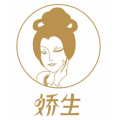What channels do electronics factories use to receive orders?
接收订单主要来自如下几个方面:
第一.就是业务员跑来的订单,他们拿着公司简介,或通过朋友介绍,或通过展销会等推销公司的产品,对有意向的潜在客户,就登门拜访,极力游说对方下订单。
第二.就是通过网络的各种平台推销,例如:天猫,淘宝,京东,亚马逊等,留下工场的联糸方式,等待感兴趣的人员下订单过来,当然也包括电视广告及各种线上线下的宣传手段,让更多的人了解自己的产品,从而等待订单下过来。
第三.建立自己的网站,把产品的生产工艺和制作理念展现出来,如果产品有了一定的知名度,通过公司的Logo名牌效应,都会有源源不断的订单下过来。
第四.就是客户的研发工程师,在设计开发阶段指定使用该产品,那订单自然就会主动下到工场来,日系一般都是这种模式。
Professional answer
Orders are mainly received from the following aspects:
First, orders are received from salesmen. They bring company profiles, or introduce the company's products through friends, or through trade fairs. They visit potential customers and persuade them to place orders.
Second, they promote through various online platforms, such as Tmall, Taobao, JD.com, Amazon, etc., leaving the factory's contact information and waiting for interested people to place orders. Of course, it also includes TV advertising and various online and offline promotional methods to let more people know about their products and wait for orders to come.
Third, they set up their own website to show the production process and production concept of the product. If the product has a certain degree of popularity, there will be a steady stream of orders through the company's Logo brand effect.
Fourth, the customer's R&D engineers specify the use of the product during the design and development stage, and then the order will naturally come to the factory on their own initiative. Japanese companies generally follow this model.
Orders are obtained through introductions from acquaintances, relatives and friends, or by posting information online.
Similar Q&A
recommend How to view sales of several months on Amazon?
E-c News Continuously pushing e-commerce knowledge to you








Latest Q&A More
-
Do I need a trademark to open a franchise store on Pinduoduo to sell books?
#Pinduoduo#
-
How to withdraw from a Pinduoduo store
#Pinduoduo#
-
How to withdraw from Pinduoduo merchants
#Pinduoduo#
-
How to pay fees when closing a Pinduoduo store
#Pinduoduo#
-
How to withdraw from Pinduoduo
#Pinduoduo#
-
Which store on Pinduoduo is authentic?
#Pinduoduo#
-
Which stores on Pinduoduo can buy genuine products?
#Pinduoduo#
-
How to check the store under Pinduoduo
#Pinduoduo#
-
How to receive Pinduoduo online game products
#Pinduoduo#
-
How to sell the electronic version on Pinduoduo
#Pinduoduo#
E-c News 2026-01-01 00:36:45

- African netizens use China Africa cross-border e-commerce platform for online shopping
- how is the new seller of cross-border e-commerce doing?
- how can cross-border e-commerce Amazon sell on Amazon platform without goods?
- Amazon store opening process and cost analysis!
- Amazon plans to expand its pharmacy business on a large scale and will add same day delivery service

